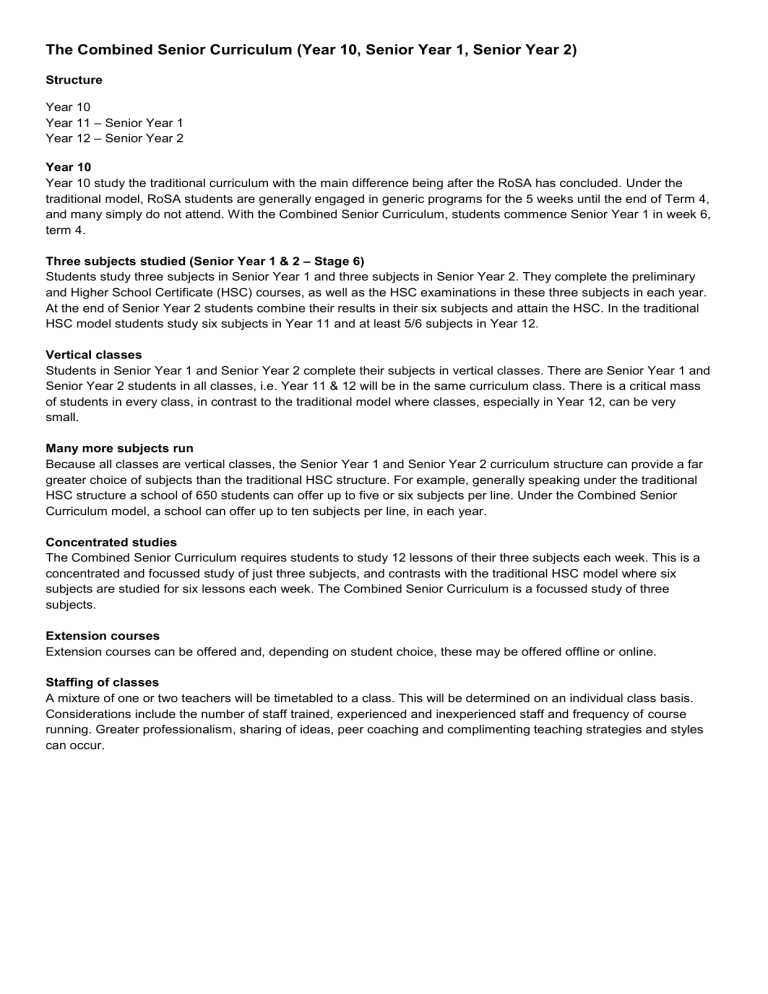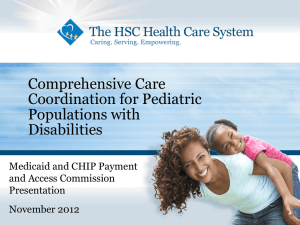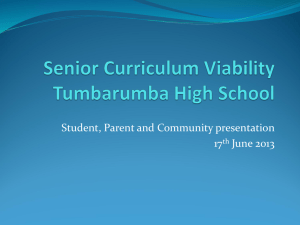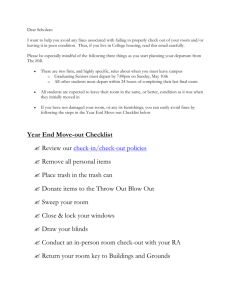Combined Senior Curriculum

The Combined Senior Curriculum (Year 10, Senior Year 1, Senior Year 2)
Structure
Year 10
Year 11 – Senior Year 1
Year 12 – Senior Year 2
Year 10
Year 10 study the traditional curriculum with the main difference being after the RoSA has concluded. Under the traditional model, RoSA students are generally engaged in generic programs for the 5 weeks until the end of Term 4, and many simply do not attend. With the Combined Senior Curriculum, students commence Senior Year 1 in week 6, term 4.
Three subjects studied (Senior Year 1 & 2 – Stage 6)
Students study three subjects in Senior Year 1 and three subjects in Senior Year 2. They complete the preliminary and Higher School Certificate (HSC) courses, as well as the HSC examinations in these three subjects in each year.
At the end of Senior Year 2 students combine their results in their six subjects and attain the HSC. In the traditional
HSC model students study six subjects in Year 11 and at least 5/6 subjects in Year 12.
Vertical classes
Students in Senior Year 1 and Senior Year 2 complete their subjects in vertical classes. There are Senior Year 1 and
Senior Year 2 students in all classes, i.e. Year 11 & 12 will be in the same curriculum class. There is a critical mass of students in every class, in contrast to the traditional model where classes, especially in Year 12, can be very small.
Many more subjects run
Because all classes are vertical classes, the Senior Year 1 and Senior Year 2 curriculum structure can provide a far greater choice of subjects than the traditional HSC structure. For example, generally speaking under the traditional
HSC structure a school of 650 students can offer up to five or six subjects per line. Under the Combined Senior
Curriculum model, a school can offer up to ten subjects per line, in each year.
Concentrated studies
The Combined Senior Curriculum requires students to study 12 lessons of their three subjects each week. This is a concentrated and focussed study of just three subjects, and contrasts with the traditional HSC model where six subjects are studied for six lessons each week. The Combined Senior Curriculum is a focussed study of three subjects.
Extension courses
Extension courses can be offered and, depending on student choice, these may be offered offline or online.
Staffing of classes
A mixture of one or two teachers will be timetabled to a class. This will be determined on an individual class basis.
Considerations include the number of staff trained, experienced and inexperienced staff and frequency of course running. Greater professionalism, sharing of ideas, peer coaching and complimenting teaching strategies and styles can occur.
The Combined Senior Curriculum (Yr 10, SY1, SY2)
Advantages of the Combined Senior curriculum over the traditional HSC structure
Three subjects studied
Students study three subjects each year instead of six subjects over two years. This allows for focussed, concentrated and in-depth study of just three subjects before the HSC examinations.
Vertical classes
A critical mass of students, maximises opportunities for HSC studies. All classes have Senior Year 2 students who have already completed their three HSC subjects and the examinations. These Senior Year 2 students can share their knowledge and experiences in the HSC with Senior Year 1 students in their classes. Students compete and cooperate in their learning.
Early start of HSC studies
At the end of the Year 10 RoSA there is no ‘down time’. With the official approval of the BOS, the preliminary course subjects commence in Week 6 Term 4. Under the traditional HSC model, significant numbers of Year 10 students do not return until the beginning of Year 11. The down time, and subsequent de-skilling can amount to numbers of weeks. Under the Combined Senior Curriculum structure, students are expected to attend school and engage in learning until the last day of Term 4.
Additional flexibility in subject selection
Students select three subjects for Senior Year 1 and three subjects for Senior Year 2 during Term 2 of Year 10. In contrast to the traditional HSC model, students have the opportunity to change their subject selections at the conclusion of the HSC course in Term 3 of Senior Year 1.
Significant future planning
The Combined Senior Curriculum structure is determined two years in advance. It is negotiated, planned and published. Students know and understand the subjects they have chosen, and what to expect. They also know that they have the opportunity to change their subjects towards the end of Senior Year 1.
VET students attain Certificate II at the end of Senior Year 1
Students in Senior Year 1 who complete a VET subject attain Certificate II at the end of Senior Year 1. This qualification is attained one year before students who study the HSC under the traditional structure. Students who study one or two VET subjects and attain Certificate II through the Combined Senior curriculum structure have a definite advantage in the competitive employment and apprenticeship market.
Opportunities to excel at the HSC for all Senior School students
In the Combined Senior Curriculum structure all senior students have the opportunity to gain a HSC qualification.
Students selecting a more academic pathway have that option while students taking alternative pathways also have the opportunity to gain credentials at various exit points. With the increase in subject selection, students have a greater chance studying a selected subject, therefore increasing student engagement and commitment towards their work.
Early start for all years
The creation of the Combined Senior Curriculum timetable for commencement in Week 6 of Term 4 enables the early commencement of all other years (7-10) in the school. Assessments are completed, as are reports, by the end of Week 5 Term 4 and the timetable ‘rolls over’. Students are promoted to their next year of academic study. They commence their classes with their assigned teacher for the subsequent year and they complete five weeks of learning before the Christmas vacation. All students are expected to attend school until the last day of Term 4.
Improvements in attendance
As a result of implementing the Combined Senior Curriculum and the associated timetable ‘roll over’, other schools implementing this curriculum structure have shown a significant improvement in attendance for all years, particularly in the last two years of school. There is also a very smooth start to the beginning of the new year.






